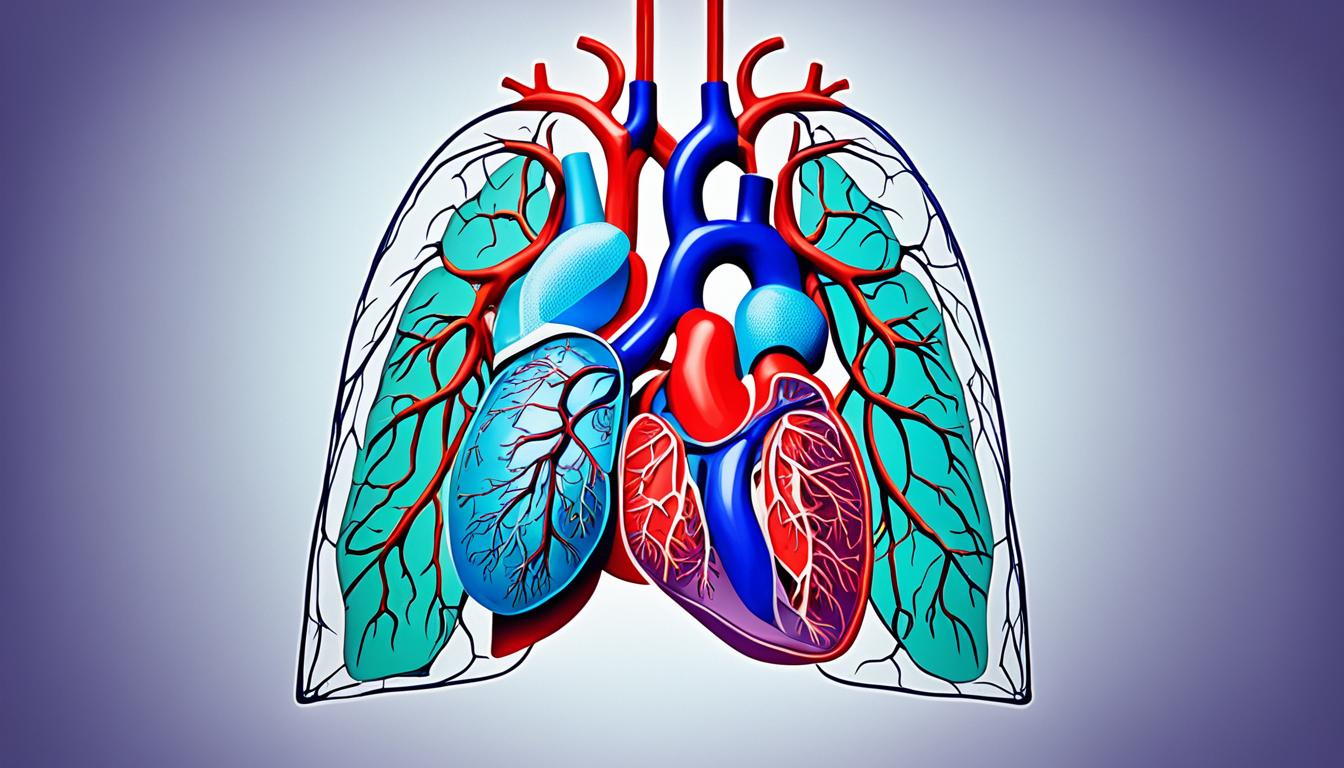Total anomalous pulmonary venous connection (TAPVC) is a kind of heart issue from birth. It messes with the pulmonary veins. These veins usually take oxygen-rich blood back to the heart from the lungs. In TAPVC, the veins don’t link right to the left atrium. This leads to strange blood movements.
The issue can cause the veins to go to another place instead of the left atrium. They might join a systemic vein or even the right atrium directly. This mixes oxygen-rich and oxygen-poor blood in the right atrium. As a result, there’s a right-to-left movement of blood. This is how the body keeps getting oxygen.
There are several TAPVC types. How it shows up and what happens can change based on where the problem is in the vein’s path back to the heart. Doctors diagnose TAPVC by looking closely with different tests and checks.
TAPVC can be treated with medicine or surgery. It depends on how bad the condition is and which specific type it is. But, stem cell therapy is also becoming a way to treat it without surgery. More studies are needed to be sure how well stem cells work for this.
Key Takeaways:
- Total anomalous pulmonary venous connection (TAPVC) is a birth heart defect that stops blood from going back to the left atrium.
- TAPVC mixes different blood types in the right atrium, leading to a special kind of blood flow change.
- The type of TAPVC is really important to know for choosing the right treatment.
- Stem cell therapy could be a new way to treat TAPVC without surgery, but more research is needed.
- Treatment options for TAPVC include medicine, surgery, or maybe stem cell therapy, by looking at each unique case.
Background and Epidemiology of TAPVC
TAPVC, or Total Anomalous Pulmonary Venous Connection, is rare. About 7 out of 100,000 babies are born with it. This birth defect means the pulmonary veins do not connect right to the left atrium.
It’s a fact that not all who have TAPVC also have family members with heart issues. But it can be linked to genetic syndromes such as Holt-Oram and Noonan.
Few environmental causes for TAPVC are known. But it can be seen in those with heterotaxy syndrome. This syndrome affects the chest and belly organs. When TAPVC is present, it makes the prognosis worse.
But usually, TAPVC is the only major heart problem people have.
Epidemiology and Associations of TAPVC
| Characteristic | Details |
|---|---|
| Incidence | About 7 per 100,000 live births |
| Familial History | Most cases occur without a family history of congenital heart disease |
| Environmental Factors | No known environmental fetal factors |
| Heterotaxy Syndrome | TAPVC can occur in patients with heterotaxy syndrome |
| Associations | TAPVC can be associated with single-gene disorders such as Holt-Oram and Noonan syndromes |
The image above shows how TAPVC affects the heart. This helps us understand the condition better.
Embryology and Anatomical Subtypes of TAPVC
It’s key to understand how TAPVC develops to know about its types. Normally, pulmonary veins grow from early lung parts and link to the left atrium. But in TAPVC, the common pulmonary vein might not finish this connection.
TAPVC has four types: supracardiac, cardiac, infracardiac, and mixed. In supracardiac TAPVC, the veins join the innominate vein or right superior vena cava. Cardiac TAPVC means they link to the coronary sinus or right atrium.
With infracardiac TAPVC, the veins connect to the portal, ductus venosus, or lower vena cava. There’s also mixed TAPVC, which shows various connection points.
Each TAPVC type has its own anatomical features. This means they might show different symptoms and need unique treatments. Knowing about these types is crucial for correctly identifying them and treating them effectively.
Common Anatomical Subtypes of TAPVC:
- Supracardiac TAPVC: Connections to the innominate vein or right superior vena cava
- Cardiac TAPVC: Connections to the coronary sinus or directly to the right atrium
- Infracardiac TAPVC: Connections to the portal veins, ductus venosus, or inferior vena cava
- Mixed TAPVC: Connections to multiple locations
Conclusion
Total anomalous pulmonary venous connection (TAPVC) is a rare congenital heart defect. It needs careful medical and surgical treatment. Knowing the different subtypes well and using detailed imaging and tests is key. This helps in choosing the best treatment.
Stem cell therapy is promising for TAPVC. But, more studies are still needed to know how well it works. The complex nature of TAPVC means a team effort from doctors, surgeons, and others. This teamwork is crucial for the best patient care.
A mix of medical and surgical treatments can better patient outcomes and life quality. Progress in the medical field will keep making the treatment better. This will improve the chances of long-lasting recovery for those with TAPVC.

